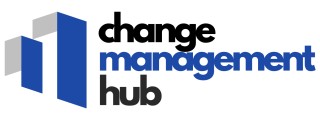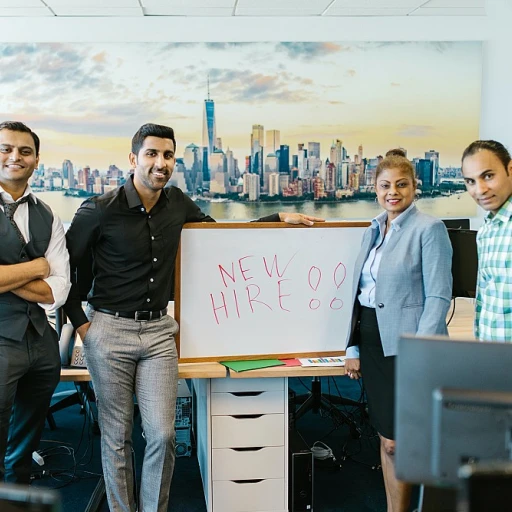-large-teaser.webp)
The Essence of ADKAR in Change Management
The Core of ADKAR in Organizational Change
The essence of the ADKAR model is its structured approach to effectively navigating organizational change. This management model provides a roadmap that guides organizations and their team members through the often-complex process of change. Developed by Prosci, the ADKAR model focuses on five critical stages: awareness, desire, knowledge, ability, and reinforcement, each step essential for successful change management.
ADKAR emphasizes the people side of change. It ensures that both leadership and employees are equipped to handle transitions, making it possible for organizations to achieve their goals. By understanding the importance of each element, from heightening awareness to ensuring long-term reinforcement, organizations can implement change seamlessly, minimizing resistance and enhancing overall success.
The model's strength lies in its simplicity and focus on individual change which collectively drives organizational transformation. It helps in pinpointing where change efforts may falter, whether at the initial awareness stage or during the reinforcement phase, enabling management to provide targeted support and resources for improvement.
Using ADKAR, teams are empowered with the necessary knowledge and abilities essential for a prosperous transition. Durational change initiatives hinge on this model to guide them through building desire within the organization and amongst employees, thus nurturing a conducive environment for change.
For organizations looking to explore more about various change management models and how the ADKAR model compares, our discussion further details the benefits and uses of different frameworks, read more in our exploration on navigating the complexities of predictive hybrid project management.
Awareness: The First Step to Change
Building Initial Awareness
In the ADKAR model, the journey of effective change begins with awareness. Recognizing the need for change is crucial for both individuals and organizations aiming for successful implementation. This crucial step lays the foundation for the entire change management process by ensuring everyone understands why the change is necessary. The concept of awareness within the ADKAR framework is not just about informing employees of impending changes; it emphasizes the importance of understanding the reasons behind the change. This ensures that team members are not only aware but also align with the proposed organizational changes.Communicating the Need for Change
Effective communication is vital for building awareness. Providing clear, concise, and transparent information helps dispel rumors and assumptions, fostering a supportive environment. Communication should convey the purpose, benefits, and potential impact of the change on both individual jobs and the organization as a whole. Moreover, involving leadership figures to champion the change and communicate its rationale can enhance awareness. When individuals see the enthusiasm and commitment of their leaders, it reinforces the legitimacy of the change.Overcoming Awareness Challenges
While building awareness sounds straightforward, it can present challenges. Employees may resist change initiatives due to uncertainty or previous experiences where change was not effectively managed. Addressing these concerns is crucial for maintaining momentum in the ADKAR change model. A strategic approach involves engaging employees early in the process, allowing them to voice concerns and offer feedback. This not only builds trust but also enhances overall awareness and paves the way for subsequent steps in the change model. Successfully overcoming these challenges ensures that employees are ready to progress to the next step: developing a genuine desire for change.Desire: Building Motivation for Change
Fostering Enthusiasm for Transition
Embedding a sense of desire in team members is pivotal to driving a successful change within organizations. The ADKAR model, a cornerstone of effective change management, recognizes that the willingness to embrace change comes after building awareness. As individuals understand why change is necessary, it becomes easier to cultivate a genuine commitment to the process.An essential step in fostering this enthusiasm is to align the change with personal and organizational goals. When employees see the alignment between their personal advancement and the organization's objectives, their desire to support and engage with the change initiatives naturally increases.
To ensure this step is as effective as possible:
- Communicate Clearly: Ensure everyone understands the benefits the change will bring. Tailor the message for different teams to highlight relevant positive outcomes.
- Involve Employees: Engage team members in the process by soliciting feedback, addressing concerns, or allowing them to contribute directly to the change strategy.
- Provide Support: Offer continuous support through training and resources that can help staff develop any knowledge and skills needed for the transition.
- Acknowledge Progress: Recognize efforts and celebrate small wins to keep motivation levels high.
Considering the importance of desire in the Prosci ADKAR model, understanding this phase helps to create an environment where individuals are motivated to learn new skills and adopt change readily. Such motivation, when sustained, can significantly influence the overall success of change initiatives. For insights into building such a supportive environment, you can explore how implementing adaptive leadership in change management plays a pivotal role in aligning motivations and driving effective change.
Knowledge: Equipping for Change
Empowering Through Learning and Development
In the journey of change management, equipping individuals with the right knowledge stands as a cornerstone of the ADKAR model. As organizations strive towards achieving successful change, imparting knowledge becomes imperative. It informs team members about new processes, systems, and roles, thus laying the groundwork for effective change implementation. The role of knowledge in change management is pivotal. It is through tailored training programs and comprehensive learning initiatives that employees gain the necessary skills to adapt to new changes. This phase doesn't only focus on disseminating information, but it ensures that the team members understand and can apply what they have learned in a meaningful way. Without this understanding, even the best-laid plans can falter. Organizations must establish robust training sessions that cater to different learning styles. Whether through workshops, e-learning modules, or hands-on training, the goal is to ensure every employee has access to the knowledge they need. Combining knowledge with practice helps solidify skills and boosts individuals' confidence as they transition into new roles or processes. Moreover, by investing in ongoing support and resources, organizations can navigate the complexities that come with continuous learning and development. This approach not only sharpens the abilities of the team but also addresses any knowledge gaps that might slow down the implementation process. A strong focus on knowledge gives team members the tools they need to actively participate and contribute to the change, paving the way for a successful transformation. Thus, the ADKAR model underscores the importance of turning knowledge into ability, ensuring that all team members are not just aware or motivated, but truly equipped to carry out their roles effectively during the change process.Ability: Implementing Change Successfully
Turning Knowledge into Action: Implementing Change
Transforming knowledge into tangible action is key in any effective change process. After developing awareness and creating a desire for change, the next crucial step is ensuring that your team possesses the ability to act. This is where change management models like Prosci's ADKAR can make a significant difference. Ability isn't just about having the know-how; it's about applying that knowledge effectively to realize successful change. In any organization, equipping team members with the skills to implement change requires a careful blend of training and support. Training provides the technical knowledge essential for the shift, while ongoing support ensures employees feel empowered and confident in applying that knowledge to their daily work. Engagement plays a pivotal role in this phase. Employees need to feel supported by their leaders and peers to successfully transition from learning to doing. Supportive management can create a culture where team members are encouraged to ask questions and seek clarity, fostering an environment where the change will take root more easily. Adequate resources and organizational support further underpin the ability to transform knowledge into action. Practical tools, access to information, and problem-solving support mechanisms can significantly enhance employees' capability to effectively implement change initiatives within their teams. When employees are equipped and trusted to apply their knowledge, the likelihood of achieving long-term success significantly increases. Ultimately, the success of this stage hinges on the synchronization between individual capability building and organizational support systems. Emphasizing practice-oriented training, fostering team collaboration, and recognizing small victories can help lay the groundwork for sustaining change over time. Effective change management is about enabling people to adeptly bridge the gap between understanding and action, paving the way for a transition that sticks.Reinforcement: Sustaining Change Over Time
Ensuring Long-term Change Success through Reinforcement
In the journey of change management, reinforcement is the decisive step that ensures the changes we work so hard to implement are not only successful but also sustainable over time. Reinforcement means embedding the change into the fabric of the organization, so it becomes the new norm rather than a fleeting adjustment.
Without proper reinforcement, even the most well-executed changes, no matter how well employees are trained and motivated, can regress back to old habits. This step is critical in making sure that the previous steps of awareness and desire, knowledge and ability, have a lasting impact and lead to a complete and effective change.
Some strategies for effective reinforcement include:
- Monitoring progress: Use metrics and feedback to assess the adaptation of the change across teams.
- Providing ongoing support: Continuously support employees and teams by addressing any issues or resistance that may arise.
- Recognition and rewards: Acknowledge and reward behaviors and outcomes that align with the change objectives, reinforcing positive changes in behavior.
- Regular communication: Maintain open lines of communication to share successes and challenges, keeping the organizational focus on the objectives of the change.
To sustain change effectively, it is also essential for management and team leaders to be vigilant and proactive. Prosci’s ADKAR model emphasizes that successful change is most achievable when team members are continually engaged and their desire for the change is nurtured as part of the organization's culture.
Ultimately, reinforcement is about ensuring all invested human and material resources culminate in long-term benefits and growth for the organization. By focusing on this step, organizations can help ensure their change efforts do not just realize success today but continue to yield rewards in the future.













